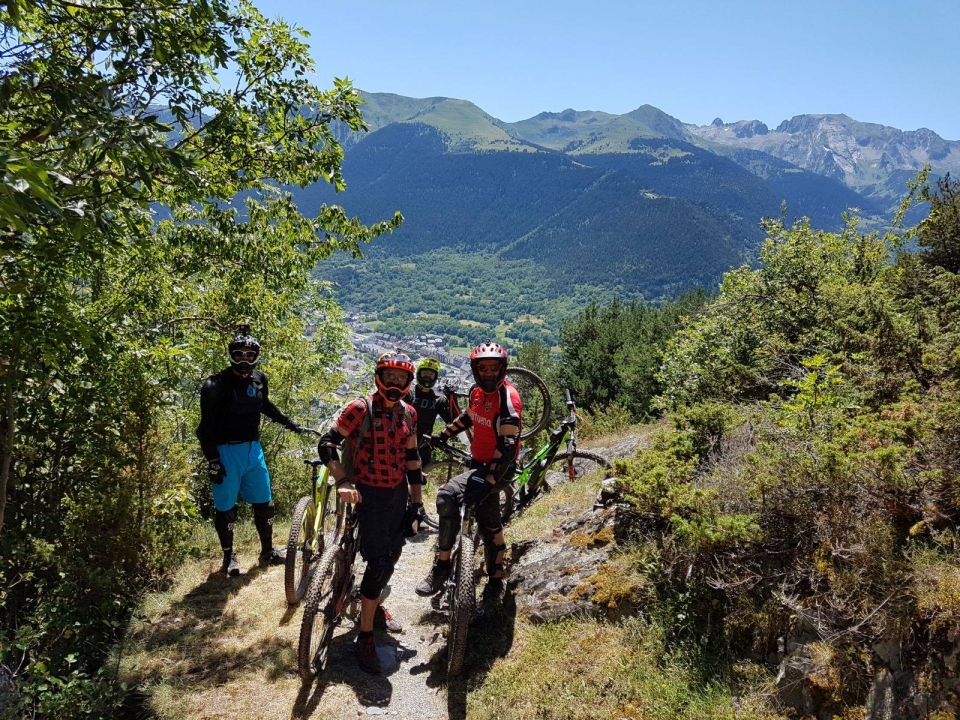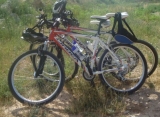The birth of MTBs wasn't an overnight occurrence at a specific time or place, but rather the result of a gradual evolution that began, indeed, in the United States during the 1970s.
Americans had been cycling off-road since the 1930s - nothing unusual, as here in Spain for instance, bicycles also travelled on dirt paths mainly because proper roads didn't exist. But the game-changing innovation, credited to the Americans, was someone's idea to fit fat balloon tyres instead of traditional narrow ones. When 26x2.1 inch tyres were mounted on bikes that had previously been for leisure riding, people began seeing the bicycle as more than just transport.

By then, the 1970s were in full swing in sunny California, particularly in Marin County north of San Francisco - a hotbed of new ideas from the countercultural "hippy" movement of the 60s and 70s. Fashionable bikes were road models, used by youth as an "alternative" transport. Restless youngsters in Marin County and San Francisco began experimenting with their bikes amidst great enthusiasm for DIY inventions and garage tinkering. No coincidence that in those years, bearded long-haired lads in San Francisco started creating machines that would later be called personal computers.
By 1971, mates from Marin County towns began gathering for races. The first races were organised on Mount Tamalpais, already known to bold cyclists who rode off-road. The bikes used were 1930s-40s models but with fat balloon tyres. What did these pioneers do with their "crazy" new bicycles? Downhill racing, no less. These lads' first experiences with what we might call "the grandmothers of mountain bikes" were downhill runs. Blokes like Marc Vendetti, John York, Tom Slifka and Kim Kraft spent weeks modifying their machines before hurling themselves down mountains to test durability. These experiments were thrilling novelties, with riders ditching typical road bike gear for Levi's and hiking boots.

Between 1974-76, Otis Guy, Marc Vendetti and young Joe Breeze rode mountains on old single-speed Schwinns, organising Marin County races. In 1974, competitors arrived from Cupertino in Santa Clara County (90km south of San Francisco - the same place Apple was born). These chaps stunned everyone by using bikes with thumb-operated gear systems on handlebars and motorbike drum brakes. Among the impressed spectators were Gary Fischer, Charly Kelly, Otis Guy and Joe Breeze.
The first contraptions and Repack races.
With races established, these handy blokes began building the first 18-speed fat-tyred bikes in their garages. Joe Breeze's Breezers were among the first mountain bikes, then called "klunkers" or "ballooners" due to tyre size.
By the late 70s, a mountain biking movement existed in Marin County and other US locations, even England. In 1978, the first MTB publication launched: Co-Evolution Quarterly, with Charly Kelly heavily involved.
Ever business-savvy Americans saw bike shops take interest as media coverage grew. Orders came in to Joe Breeze, Mert Lawwill and Don Koski, often modifying old Schwinn Varsity frames with help from motorbike frame welders.
After selling several hundred bikes, six Marin County enthusiasts travelled in 1978 to Colorado's mountains where annual rides had occurred since 1976 - apparently another group using mountain bikes. This was Crested Butte, home to the First Annual ride to Aspen. These Rocky Mountain locals had been doing what the California lads did for two years. The Pearl Pass Tour continues today.

In January '79, Joe Breeze and Otis Guy visited a mate near San Francisco who'd built road and tandem frames to order since age 15. A skilled cyclist too - his name: Tom Ritchey.
Breeze showed Ritchey his frame for rear triangle modifications, but Ritchey's face lit up seeing Breeze's creation. The 26x2.1 wheel concept fascinated Ritchey, whose previous benchmark was "mammoth" 26x1.3 inch tyres used by a British group called Rough Stuff Fellowship.
As time passed, single-speed bikes evolved into geared models. The first official mountain bike race occurred on 21 October 1976 at Pine Mountain - a 4km downhill. These became known as Repack races because riders had to repack hub brakes with grease after each descent as the brakes "evaporated" from heat.

From 1976-84, 24 Repack races occurred. Joe Breeze held the wins record (10), while Gary Fischer clocked fastest descent. Women like pioneer Wende Cragg joined too. Repack races united the local biking community, boosting interest in these bikes. By then, modified bike frames frequently broke during races - purpose-built frames were needed.
Joe Breeze began selling frames in October '77 and June '78. Called Breezers (quite originally), they sold for $750 each, all featuring a distinctive curved top tube from head to seat tube.
Coming soon: the conclusion of MTB history from the late 70s to present day.
















